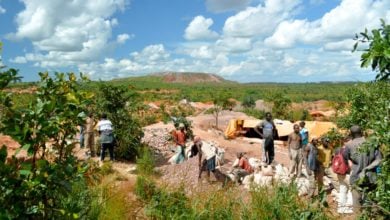October 2010 marked a revolution in China’s computing power, made possible by the country’s October 1949 revolutionary victory, which opened the door to great social, industrial and technological advances. China for the first time has claimed the top spot in the list of the world’s supercomputers.
 Tianhe-1A supercomputer |
This remarkable achievement has received barely a mention in the U.S. mainstream media. But that in no way lessens its truly historic significance—especially for the oppressed peoples of the world, who have identified with the Chinese revolution from the very beginning. The fact that the Communist Party of China has opened up the country to large-scale foreign investment and implemented significant capitalist “reforms” has not reduced the hostility of imperialism toward China.
The title for the world’s fastest supercomputer has gone to China’s Tianhe-1A (Milky Way), which can perform more than 2.5 thousand trillion calculations a second. To reach such speeds, the machine draws on more than 7,000 graphics processors made by Nvidia and 14,000 Intel chips as well as new Chinese FeiTeng-1000 processors.
The supercomputer houses its processors in more than 100 refrigerator-sized cabinets that together weigh more than 155 tons.
According to the NewsOXY website, “A single-day task for Tianhe-1A might take a mainstream dual-core personal computer 160 years to complete—if it worked nonstop.” (Oct. 31)
The claim to be the fastest machine on the planet was confirmed by the Top 500 Organisation, which maintains a list of the most powerful machines. It is expected to be announced at the SC10 Conference in New Orleans, Nov. 13-19.
The Tianhe-1A machine took over the top spot from XT5 Jaguar at the Oak Ridge National Laboratory in Tennessee, which has a calculating power of 1.75 petaflops. One petaflop is the equivalent of 1,000 trillion calculations per second.
Prof. Jack Dongarra from the University of Tennessee, one of the computer scientists who helps compile the top 500 list, confirmed that China’s claim was legitimate: “This is all true. I was in China last week and talked with the designers, saw the system, and verified the results.”
He added: “I would say it’s 47% faster than the Oak Ridge National Laboratory’s machine, 1.7 Pflops (ORNL system) to 2.5 Pflops (Chinese system).” (BBC News, Oct. 28)
The monster computer is based in China’s National Center for Supercomputing in Tianjin, some 80 miles (130 kilometers) southeast of Beijing on the coast. It is an irony of history that this city was once home to imperialist “concessions” (enclaves in port cities governed and occupied by foreign powers) prior to the 1949 revolution.
The supercomputer has already been put to use by the local weather service and the National Offshore Oil Corporation, according to BBC News. “It could also serve the animation industry and bio-medical research,” said Liu Guangming, the head of Tianjin’s National Center for Supercomputing. (China Daily, Oct. 31)
No doubt such applications only scratch the surface of the potential uses for what is now the world’s most powerful supercomputer.






